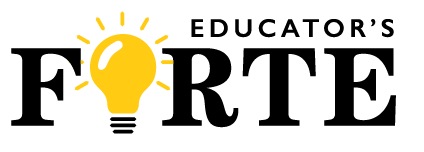Let’s face it: teaching is one of the most rewarding and challenging professions out there. Teachers are often isolated in their classrooms, yet their success hinges on collaboration, reflection, and continuous learning. Enter Peer Coaching Groups and Professional Learning Communities (PLCs)—two powerful models that bring educators together to share ideas, reflect on practices, and ultimately improve outcomes for both teachers and students. While they share similarities, their differences make each uniquely suited for particular needs. Let’s dive in and unpack how these two approaches can work for your school.
What Are Peer Coaching Groups and PLCs?
Think of Peer Coaching Groups as a cozy book club for teachers—but instead of debating plot twists, you’re dissecting lesson plans, sharing strategies, and supporting one another through the common challenges teachers face in the classroom. These are small, trust-based groups (usually 3–5 members) where everyone’s equal. No evaluations, no pressure—just a safe space for mutual growth and honest feedback.
PLCs, on the other hand, are more like the all-staff meeting you actually want to attend. They’re larger, more formalized teams focused on big-picture goals like improving student learning and analyzing data. PLCs are often built into the fabric of a school’s data-driven culture, ensuring that teachers work collaboratively to address school-wide objectives.

Both aim to foster growth and collaboration, but the vibe? Peer Coaching Groups are intimate and personal, while PLCs are structured and mission-driven.
Where They Overlap: The Shared Magic
- Collaboration and Growth
Both Peer Coaching Groups and PLCs emphasize teamwork. Whether it’s swapping classroom management tips or brainstorming ways to boost test scores, teachers work together to improve their practice. - Reflection
Reflection is the secret sauce in both models. Peer Coaching Groups encourage personal reflection through open conversations, while PLCs reflect on data to evaluate instructional strategies. Both aim to answer that vital question: “How can we do better?” - Continuous Improvement
The ultimate goal of both models is progress—whether it’s helping a teacher find their rhythm or raising student achievement across the board. When teachers grow, students benefit, and the whole school wins.
Where They Part Ways: The Unique Strengths
Scope and Structure
- Peer Coaching Groups are small, informal, and self-directed. It’s all about individualized professional growth—teachers tackling specific challenges together.
- PLCs are larger and more formal, often organized by grade level or subject area. They follow a structured agenda, complete with data analysis and action plans.
Goals and Focus
- Peer Coaching Groups zero in on personal teacher growth. Want to nail that new reading strategy? Your peer group has your back.
- PLCs tackle school-wide goals, like improving literacy rates or rolling out new curriculum standards. It’s about the big picture.
Accountability
- Peer Coaching Groups rely on supportive accountability. Members motivate each other, but there’s no reporting to leadership.
- PLCs are more structured. Expect documentation, presentations, and follow-ups. School leaders want to see the impact and are often directly involved in PLCs.
Role of Leadership
- Peer Coaching Groups are like a teacher potluck—self-organized and self-run.
- PLCs have leadership fingerprints all over them, with administrators or instructional coaches steering the ship to align with school priorities.

Why They Work Together: The Dream Team
Here’s the secret: you don’t have to pick sides. Peer Coaching Groups and PLCs are like peanut butter and jelly—better together. They complement each other beautifully.
Peer Coaching Groups are a fantastic way to empower teachers and build collaboration from the ground up. PLCs drive a school-wide, data-driven culture. Together, they create a culture of collaboration that fuels continuous improvement.
Investing in teacher collaboration is always worth the effort, and both Peer Coaching Groups and PLCs can help you get there. It’s not really necessary to pick one or the other, and in fact having both can be a slam dunk for your school. When it comes to driving educator growth, more collaboration and more support is always a key part of the answer.
